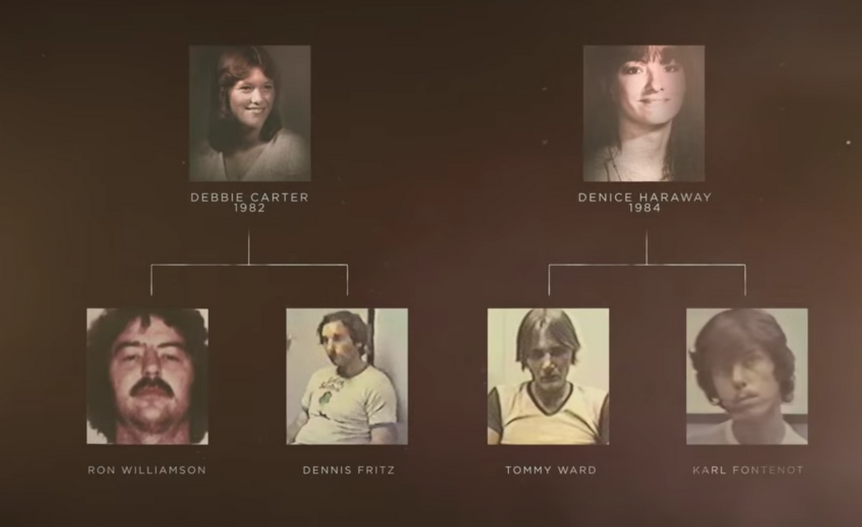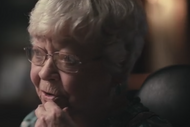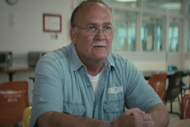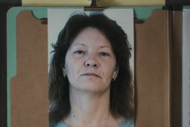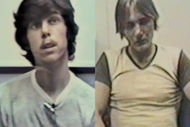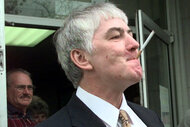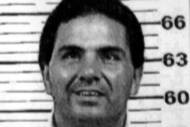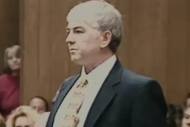Create a free profile to get unlimited access to exclusive videos, breaking news, sweepstakes, and more!
From Murder Suspects To Jailhouse Snitches, These Are The Key Players In 'The Innocent Man'
This is your cheat sheet to understanding all the main players in the two 1980s murders that wreaked havoc on Ada, Oklahoma. The Netflix docu-series about the crimes, "The Innocent Man," is now streaming.

If you're feeling confused while watching “The Innocent Man,” Netflix's newest true crime docu-series, you're not alone. The series focuses on two heinous and controversial murder cases that occurred in the small town of Ada, Oklahoma in the 1980s — the 1982 killing of Debbie Carter and the abduction and murder of Denice Haraway in 1984 — which means there are a lot of people, motives and conflicting evidence to keep straight.
[Warning: Spoilers for “The Innocent Man” ahead]
In each murder case, two men were arrested and later wrongfully convicted of the crimes. The two men in the Carter case have been exonerated, while the two imprisoned for the Haraway case are fighting to get released decades later.
The six-episode series, based in part on John Grisham’s 2006 nonfiction book, “The Innocent Man: Murder and Injustice in a Small Town,” chronicles the tragedies and the failure of justice that resulted. Through interviews and recreations, the series reveals how Ada officials used questionable tactics to convict. The series show the links between the two murders, and thus some of the people involved in the cases overlap.
Here's a guide to the “The Innocent Man’s” key players.
Debbie Carter
Debra Ann Carter, or Debbie, was just 21 when she was brutally raped and killed. She was discovered dead inside her home on December 8, 1982: Face down, naked, and bloody, with an eerie message written on her back. She worked part-time as a cocktail waitress and was well-liked around town. She could often be seen sporting a Western-style belt with “Debbie” written on it. Her mother described her as “feisty, full of energy, and life,” but also a "good girl with a lot of morals," according to the first episode of the docu-series.
Denice Haraway
Denice Haraway, a 24-year-old college student and newlywed, was kidnapped while working a shift at McAnally’s, a convenience store, on April 28, 1984. A customer walked into the store as she was being led out by a man. Not realizing she was in the process of being abducted, he went to up to the cash register only to realize it was jammed open. He then called the police to report the missing clerk. Her body wouldn't be found until 1986. She had died from a gunshot wound.
Tommy Ward
Ward was of the two men convicted of Haraway's murder. His friend Johnny Daniels told producers of the Netflix docu-series that he was a quiet person in general. But at some point, he had a “downfall,” his sister Tricia Wolf noted. She added that he began drinking and drugging pretty hard around the time of Haraway’s disappearance. He had his run-ins with the police, and his family theorized that the police didn’t like him because of his drinking and because he was considered “lower class.” Although Ward confessed to kidnapping, raping, and killing Haraway, he later said it was a false confession, one partially based on a dream. Ward is still serving out a life sentence.
Karl Fontenot
Fontenot, like Ward, was convicted of Haraway's murder. He also had a rough upbringing, according to the docu-series. He endured a lot of abuse as a child and witnessed some pretty horrible things, including alleged sex between his father and animals at his home. Daniels noted he was “a little slow when it come to his thinking."
Fontenot also confessed to police, based on a dream. In his confession, he said he stabbed Haraway multiple times, although when her body was later found post-conviction, it revealed she was never stabbed. Fontenot’s attempts to seek a new trial have been unsuccessful. He is still behind bars.
Odell Titsworth
Both Fontenot and Ward implicated their friend Titsworth in the rape and murder through their dream-based confessions. Not only did they say Titsworth was present during the crime, but they also claimed that he was the ringleader and the one with the most physical strength, claiming he lifted the body over a fence. However, Titsworth had a solid alibi. As chronicled in the docu-series, his arm was broken during a scuffle with police two days before the crime. He was never arrested in connection with the crime. Prosecutors claimed that when Ward talked about the actions Titsworth committed, he was actually talking about his own heinous actions.
Ron Williamson
Williamson was convicted and sentenced to death in 1988 for Carter’s rape and murder. He served 11 years on death row before the Innocence Project helped him get released in 1999, just five days before he was scheduled to be executed. But before all that, he had a promising baseball career. Grisham noted that when Williamson was young, people in that part of Oklahoma thought he “was the next Mickey Mantle,” according to a talk Grisham gave at the University of Virginia School of Law in 2006. However, things didn’t work out, and he kind of became the “town drunk” before being wrongfully accused of murder. As loved ones noted in the docu-series, it took Williamson five years post-release to “drink himself to death.” He died of cirrhosis in 2004.
Dennis Fritz
Convicted of participating in Carter's rape and death, Fritz spent 11 years behind bars before he was exonerated in 1999. He had been sentenced to life in prison in 1988. Fritz was implicated in the crime because he was seen at the bar where Carter worked the night of her murder, according to The Innocence Project. A forensic analyst also testified that hairs found at the crime scene were consistent with Fritz’s hair. Since being released from prison he has written a book and spent time traveling around the country to speak at schools about his experience. However, after a car accident, he suffered a brain injury and now reportedly lives with his daughter, according to PBS.
Ricky Jo Simmons
Simmons, on his own accord, went to the police station in 1987 to confess to the rape and murder of Carter. Police didn't arrest him or believe him. They cleared him as a suspect, inspiring rage within Williamson, who truly believed that Simmons was the real killer. According to the series, Carter's family never seemed to believe Simmons' confession.
Glen Gore
Gore and Carter were high school classmates, and he was the last person seen with her before her murder. He ended up being identified as her real killer years later. For whatever reason, police only wrote up a 10-sentence police report about him after speaking to him and they neglected to collect any samples from him. This was even more bizarre because just one month before she was killed, she told a friend she “was afraid" of Gore because of his temper.
The messages scrawled throughout Carter's apartment were written in an attempt to frame other people and keep the attention off him. It worked, at least for over a decade. He fell through the cracks of the investigation, but in 1999, he was officially arrested. Gore was sentenced to life without parole in 2006, according to NewsOK, the Oklahoman's website.
Terri Holland
Holland was a linking force between all four men. She was a prison informant who testified as a witness in both murders. She told prosecutors Williamson had confessed to killing Carter, which resulted in Williamson and Fritz getting arrested, according to TIME. She also gave testimony that helped convict Fontenot and Ward, testifying that she overheard Fontenot confessing to the crime while locked up, according to the docu-series. As Grisham noted in his book, in exchange for snitching, she got to plea-bargain herself out of jail. Holland also had a dark past with Williamson, Grisham explained. Her sister accused him of rape, and Holland blamed him for her eventual death.
[Photo: Netflix]
